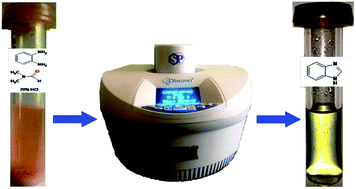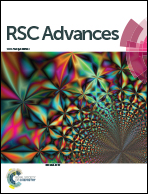Expedient synthesis of benzimidazoles using amides†
Abstract
In the present report an efficient, rapid, facile and inexpensive route for the synthesis of benzimidazoles using 1,2-arylenediamines and N,N-dimethylformamide in acidic medium under thermal/microwave condition is developed. This reaction was further explored with the different amides to afford a library of 2-substituted benzimidazoles. The advantage of the present synthetic method includes shorter reaction time, easy work up and excellent yields without using catalysts.


 Please wait while we load your content...
Please wait while we load your content...